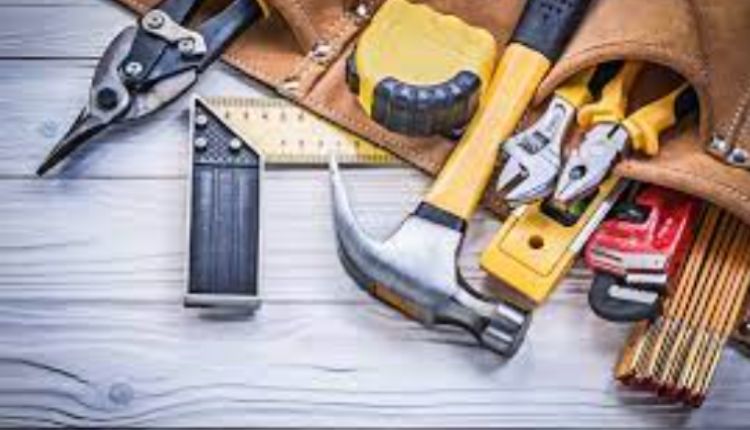Renting an apartment comes with many benefits, including not having to worry about major property maintenance tasks. However, when you encounter issues or need repairs in your rental unit, it’s essential to know how to handle maintenance requests as a tenant. In this guide, we’ll walk you through the process of reporting maintenance issues and ensuring they get resolved promptly.
If you’re currently in search of apartments for rent, you can explore a variety of options. Now, let’s dive into the steps for effectively handling maintenance requests.
Table of Contents
Step 1: Document the Issue
The first step in addressing maintenance concerns is to document the problem thoroughly. This documentation serves as evidence and can be valuable when communicating with your landlord or property management company. Here’s what you should do:
- Take Photos or Videos: Use your smartphone or camera to capture images or videos of the issue. Be sure to include clear shots of the problem from various angles.
- Note Details: Write down a description of the issue, including when you first noticed it and any specific circumstances that may have contributed to it.
- Keep Records: Maintain a record of all communications related to the maintenance request, including emails, text messages, or notes from phone calls.
Step 2: Notify Your Landlord or Property Manager
Once you’ve documented the issue, it’s time to inform your landlord or property management company. Prompt communication is essential to ensure timely repairs. Here’s how to do it effectively:
- Send a Written Request: While verbal communication is a good starting point, it’s crucial to follow up with a written request for maintenance. This creates a formal record of the issue.
- Include Documentation: Attach photos or videos of the problem to your written request. This visual evidence can help your landlord or property manager assess the issue accurately.
- Specify Urgency: If the issue is urgent or poses a safety hazard, make it clear in your request. Urgent problems should be addressed promptly.
Step 3: Follow Up
After reporting the maintenance issue, it’s essential to follow up if you don’t receive a response or if the problem remains unresolved. Here’s what you can do:
- Set a Deadline: In your initial communication, include a reasonable deadline for the maintenance to be completed. This helps create a sense of urgency.
- Send Reminders: If the deadline passes without resolution, send polite reminders to your landlord or property management company. Use your record-keeping to reference previous communications.
- Contact Multiple Channels: If your initial attempts to reach out are unsuccessful, try contacting your landlord or property manager through different channels, such as email, phone calls, or even in person if possible.
Step 4: Understand Your Rights
As a tenant, you have rights when it comes to maintenance and repairs. Familiarize yourself with your local tenant laws and your lease agreement to understand what your landlord is obligated to address. Some important points to consider:
- Maintenance Responsibilities: Your lease should outline the responsibilities of both you and your landlord regarding maintenance and repairs.
- Timeliness: Local laws may specify how quickly certain types of maintenance requests must be addressed. Familiarize yourself with these timelines.
- Tenant Remedies: If your landlord fails to address a significant issue, you may have legal remedies, such as withholding rent, repairing and deducting costs, or terminating the lease.
Step 5: Be Courteous and Professional
Maintaining a respectful and professional tone in your communications with your landlord or property manager is essential. While it can be frustrating when maintenance requests go unanswered, maintaining a positive relationship can lead to smoother resolution. Here are some tips:
- Stay Calm: Remain calm and polite when discussing maintenance concerns. Emotional or aggressive communication is less likely to lead to a positive outcome.
- Document Everything: Continue to document all interactions and communications, including dates, times, and the content of discussions.
- Seek Mediation: If communication breaks down completely, consider seeking mediation or involving a tenants’ association to help resolve the issue.
Common Maintenance Requests
Maintenance requests can vary widely, but some common issues tenants may encounter include:
- Plumbing Problems: Leaky faucets, clogged drains, or toilet issues.
- Appliance Repairs: Malfunctioning appliances, such as refrigerators, stoves, or dishwashers.
- Heating and Cooling: Problems with heating or air conditioning systems.
- Electrical Issues: Outlets or fixtures that don’t work properly.
- Pest Control: Infestations of pests like rodents, insects, or bedbugs.
- Structural Repairs: Issues with the roof, walls, floors, or other structural components.
Conclusion
Handling maintenance requests as a tenant is an essential aspect of maintaining a safe and comfortable living environment. By documenting issues, notifying your landlord or property manager promptly, and following up as needed, you can ensure that maintenance concerns are addressed in a timely and effective manner. Understanding your rights and responsibilities as a tenant is also crucial in navigating the maintenance and repair process.
